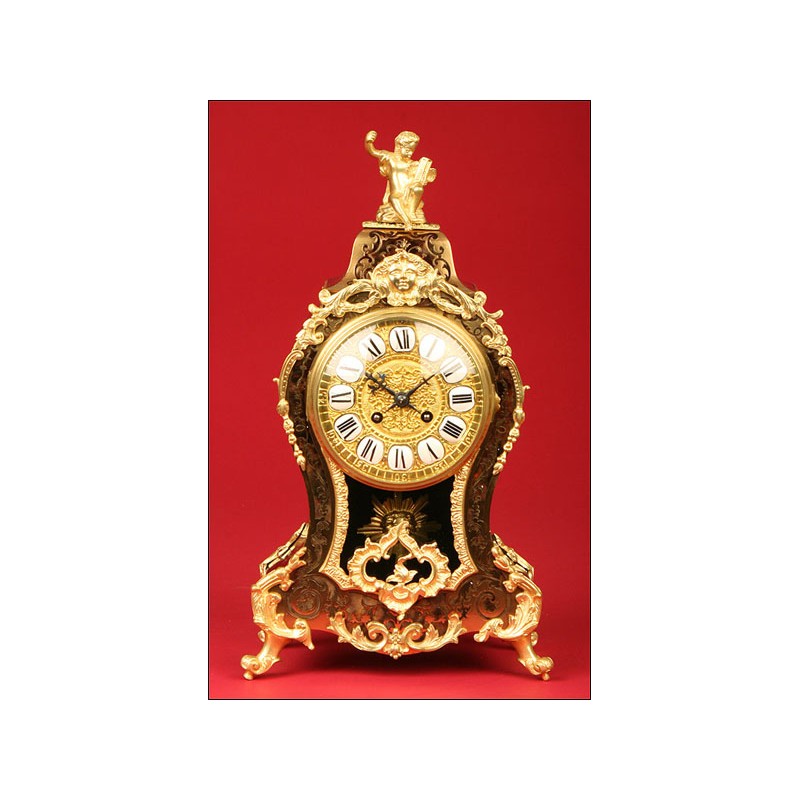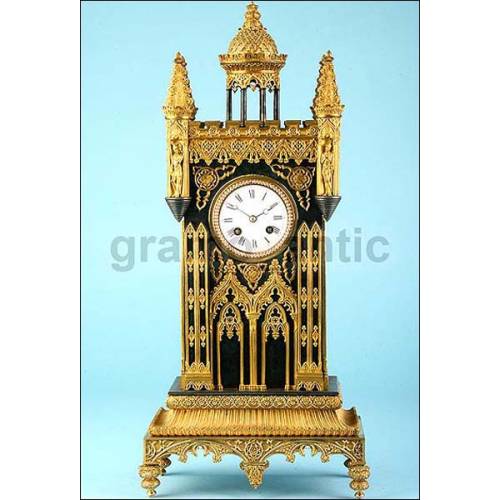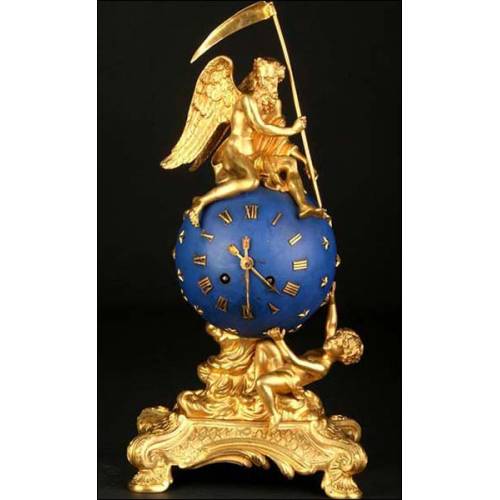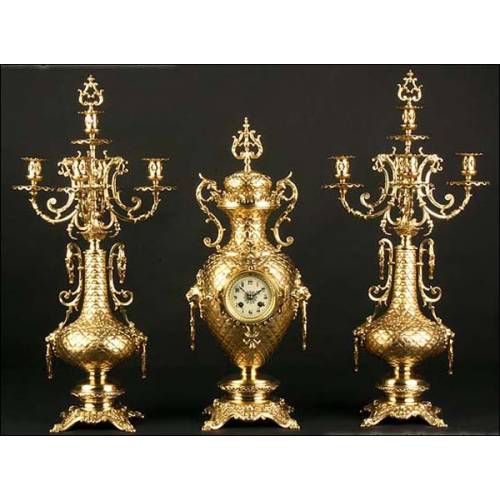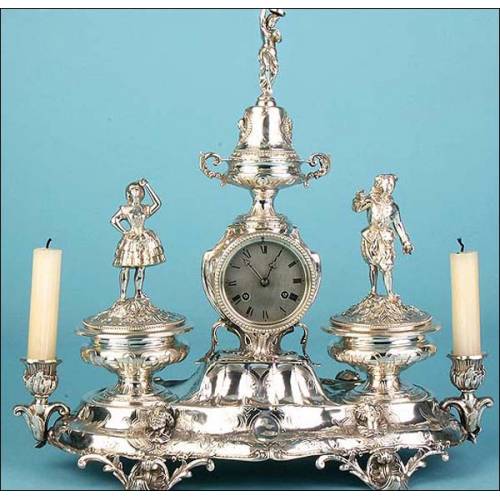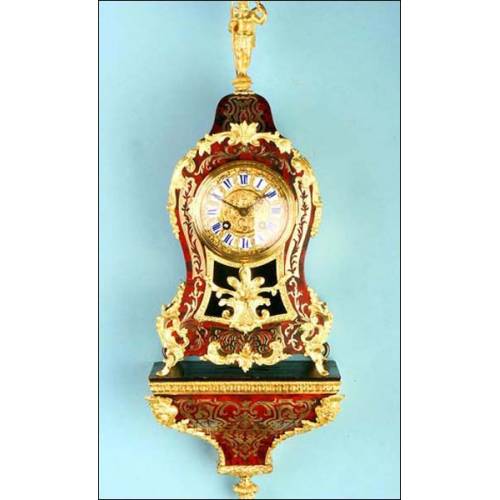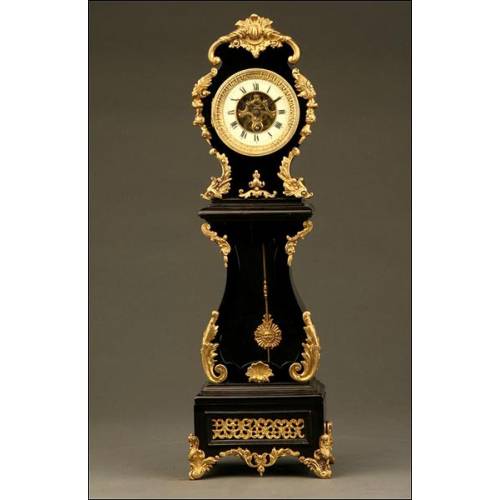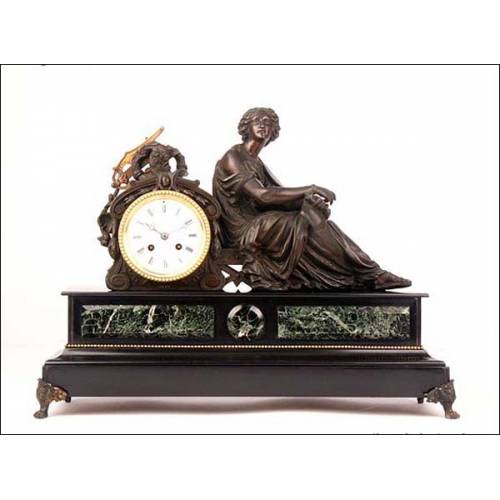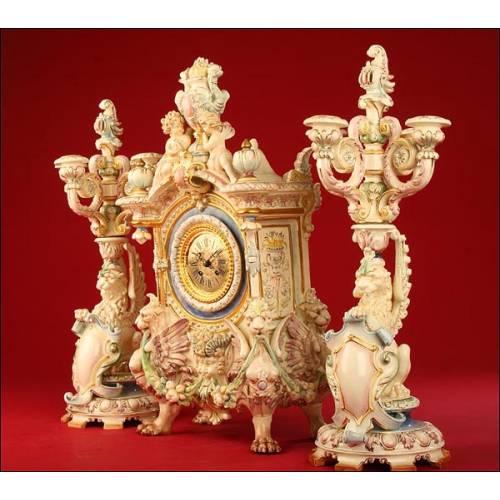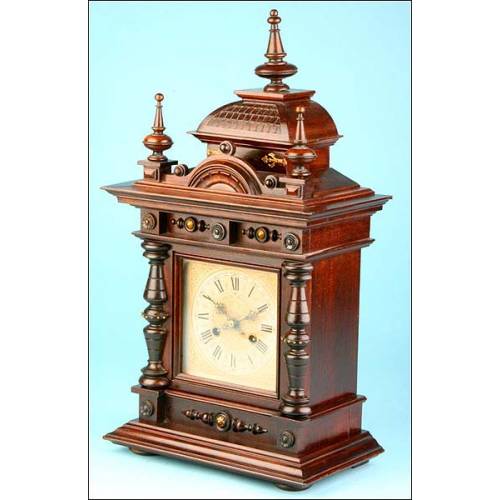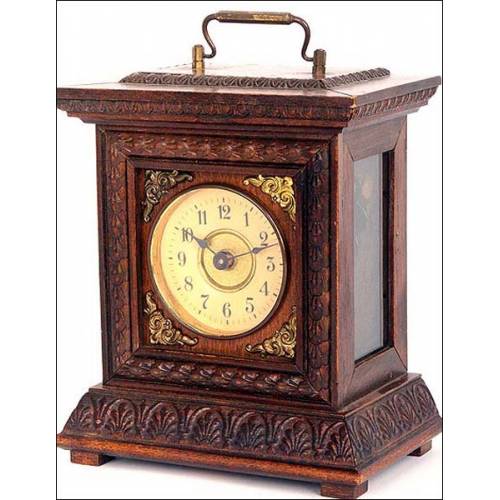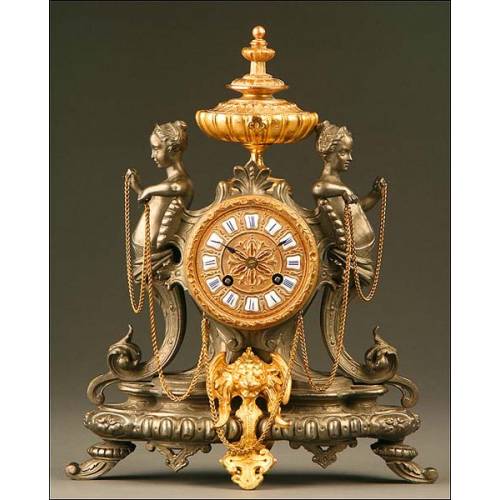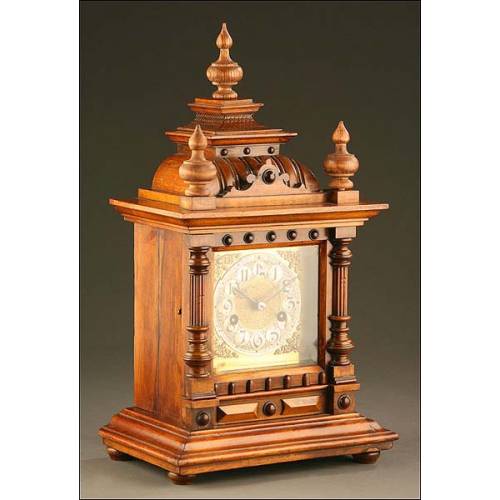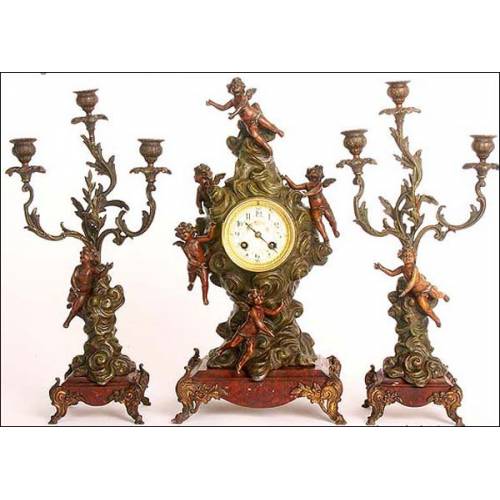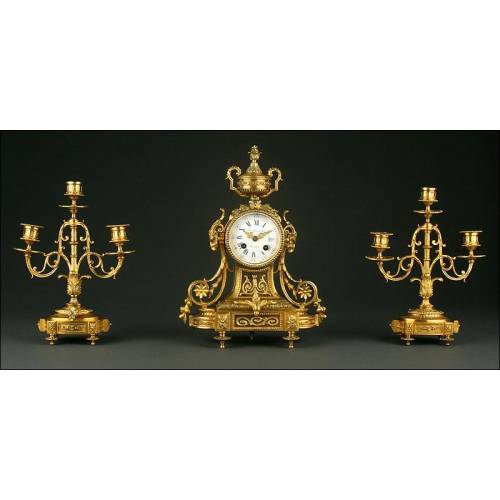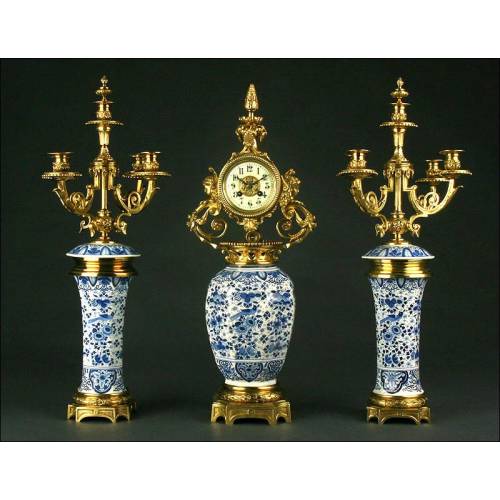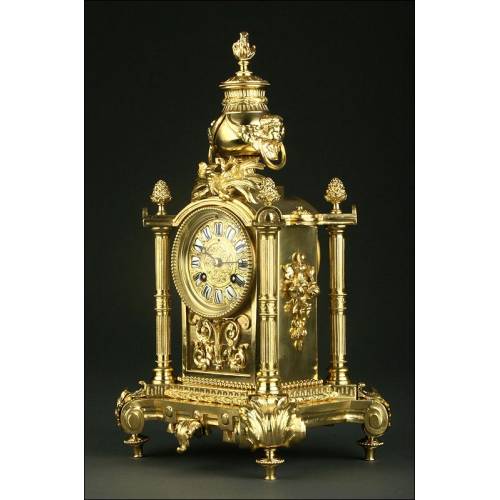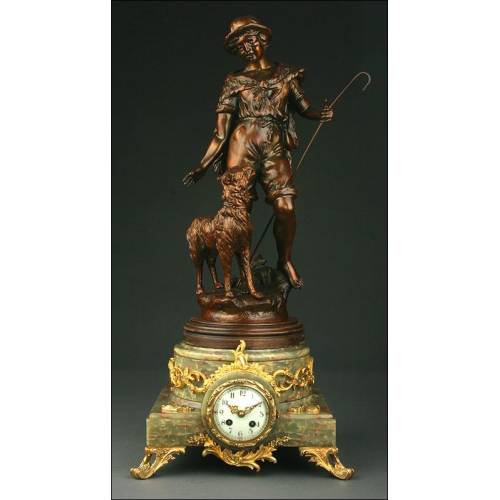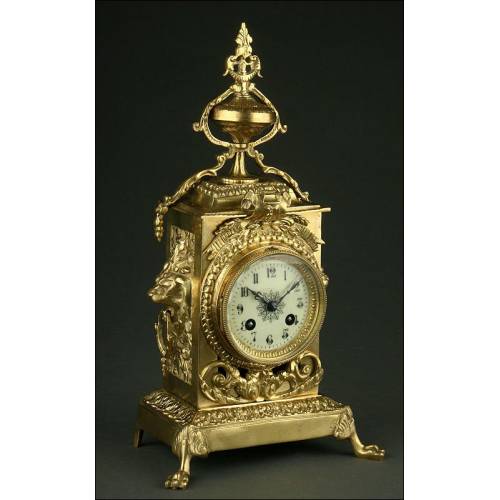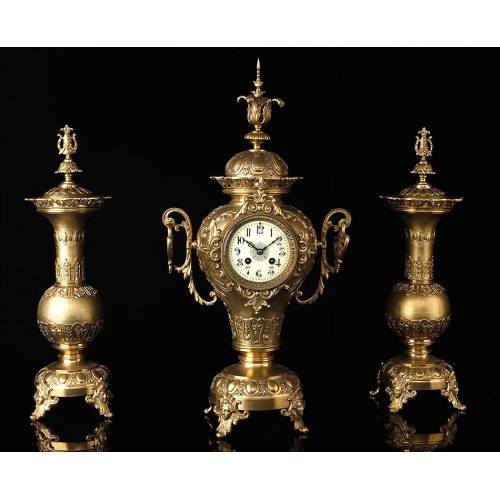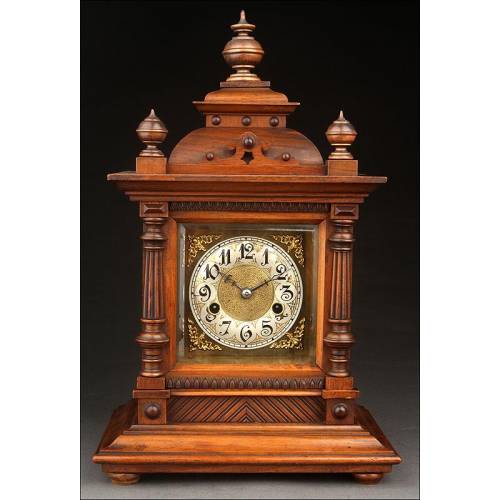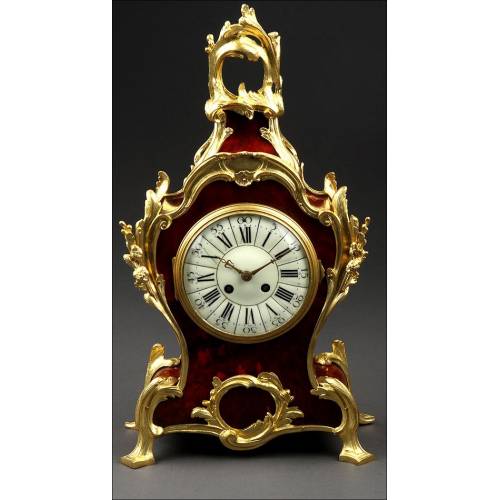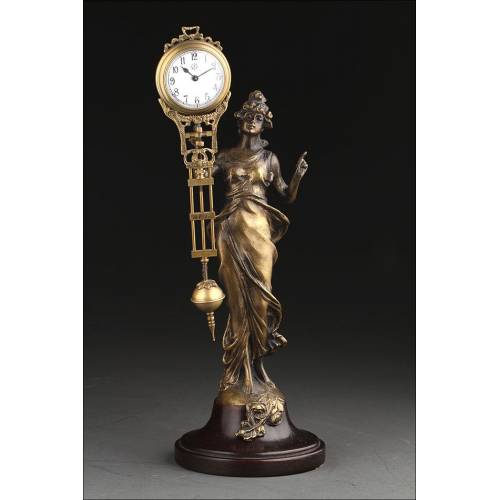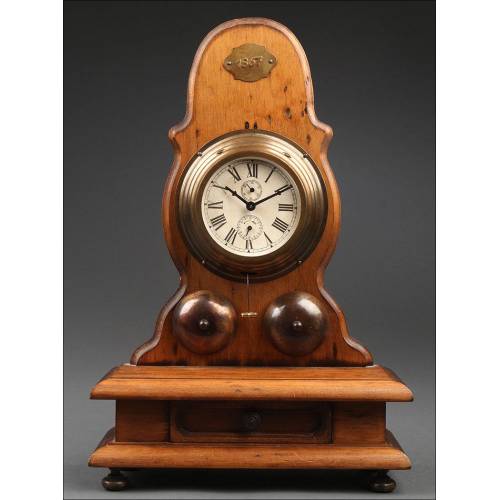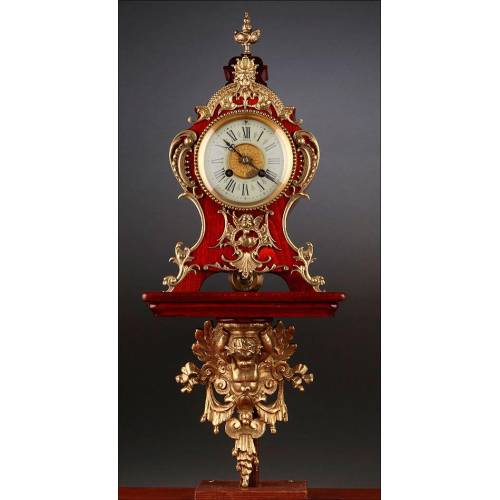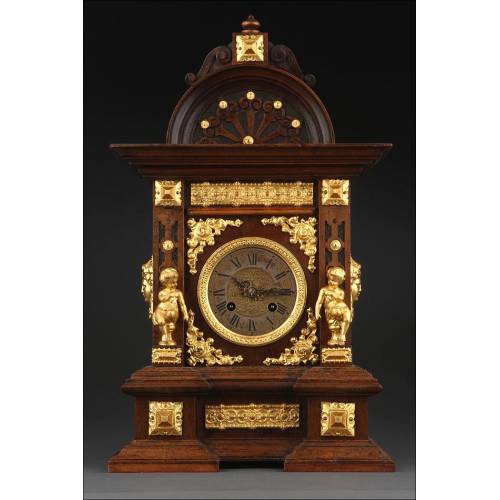J-363
Impressive Boulle Mantel Clock in Tortoiseshell, S.XIX.
Boulle mantel clock in tortoise shell and ebony, 19th century.
Sold!
Impressive Boulle Mantel Clock in Tortoiseshell, 19th century. Precious box of undulating contour in ebonized wood in clear contrast with the inlay of a vegetal decoration in tortoise shell and brass. The piece has decorative and sinuous mercury gilded bronze finials topped at the top of the dial by a face, which gives the piece an incredible majesty. The beautiful case is crowned by a sculpture of a putti sitting beautifully made. It highlights the circular gilt dial in solid bronze of 12.5 cm in diameter, with Roman numerals on small and delicate enamel plaques in relief, in perfect condition, and embossed center with vegetal decoration. The dial is in perfect condition, like new. Circular minute counter on the dial and sword type hands in black. It is an exposed pendulum watch, with its magnificent sunray pendulum that can be seen thanks to the crystal that presents the watch in its central part. The case back has a circular crystal door that reveals the movement of the watch. The 8-day Paris movement is stamped with Paris Fini. It has an hour and half-hour chime. Key is attached and the crystal and pendulum are original. It is in perfect working order and in wonderful aesthetic condition. The first clocks, made with weights, were necessarily hung on the wall. With the invention of the spring mechanism in the 17th century it was possible to unhang them and move them from place to place. These first clocks did not appear in France until 1750, and it took a decade for them to become established in England. They were commonly called mantel clocks because of the place where they were placed in the house, around which the whole family gathered. The decorative technique of "Boullé" is taken from André-Charles Boulle, in charge of the design and production of Louis XIV's court furniture. He worked for the court as a master cabinetmaker, and was mainly recognized for his high quality marquetry work. He produced a type of ornamental mosaic composed of different materials such as the one shown in this example. He was responsible for introducing in this technique, already known before, the use of new materials for mosaic and a perfect execution in each piece never before achieved. Boulle's pieces can be considered true pieces of jewelry because of the exquisite detail of execution and the quality of the materials used. It was first used in furniture pieces formally within the Louis XIV decorative style (Baroque), but it came to create a true aesthetic throughout Europe, giving name to what became known as the Boulle Style or Boulle Technique. A real jewel of collection that you can not miss. Measures: 23 cm wide and 40 cm (height) x 23 cm (width) x 13 cm (depth).

